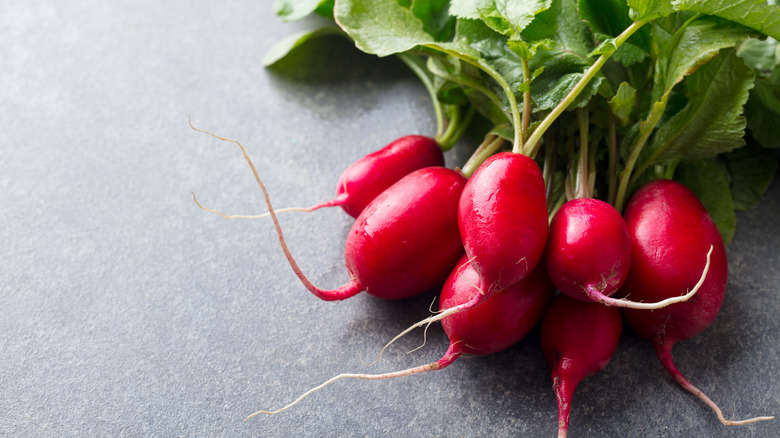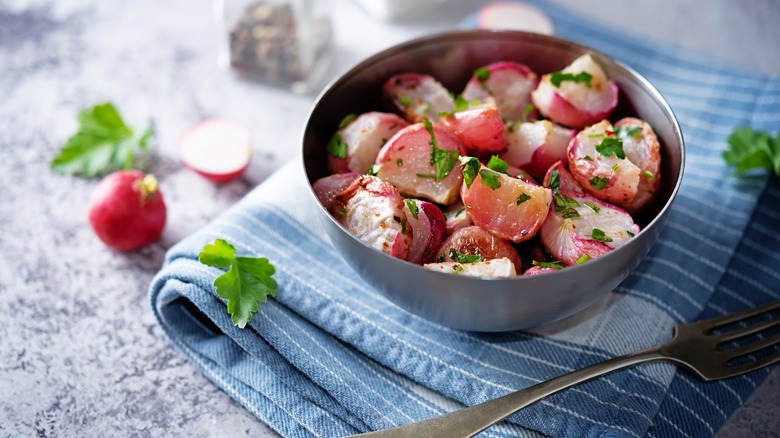The Cooking Method To Tone Down The Bite Of Radishes
Within the cruciferous vegetable family are kale, broccoli, mustard, cabbage, and radishes — the latter of which are known for their bright pink or red hue. Among these are French breakfast or cherry belle varieties, while others, like white hailstone or zlata radishes, are white and yellow. But color aside, radishes are perhaps best known for their spicy, peppery, and bold flavors. Some are a little bit sweet as well, though if you ever come across black radishes, be wary of their bitter and hot profiles.
Interestingly enough, there are several reasons why radishes taste so strong. The first could be because the radishes succumbed to certain stress factors (such as heat), which can result in slow growth. The second has to do with the radishes' age. Simply put, old radishes equate to spicier flavors, while young ones are milder. The last reason has to do with allyl isothiocyanate, which gets created within radishes after they're sliced or bitten into and is responsible for that peppery zing.
While some may enjoy the spicy flavor of these crunchy veggies, you're probably not alone if you don't. Fortunately, there's a way to tone down the bite of radishes. Here's how any home cook can do it.
Roasting radishes creates a mild flavor
If you've got 20 to 30 minutes to spare and an oven, you're well on your way to radishes that are a little more palatable. That's enough time for these vibrant-colored veggies to go from raw and spicy to roasted and mellow. Not only will the flavors become sweeter, but the texture will also become more tender for a more pleasant eating experience.
Although there are several ways to cook with radishes, from grilling to toasting them up to a nice crisp, roasting them is the method that results in buttery, melt-in-your-mouth consistency. Just coat them with olive oil, garlic powder, and salt and pop them in a 375-degree Fahrenheit oven, although any spices or seasonings you have on hand will do.
Radishes are typically left whole for roasting, but as expected, they can vary in size. In this case, it's best to cut them in halves or quarter them. This will allow all of the radishes to cook at the same rate; otherwise, you may end up with a mix of soft, roasted radishes and crunchy, semi-raw ones.
Overall, radishes should be given more credit. Beneath their assertive, sharp flavors lies a sweetness that's perfect for snacking and a wide variety of recipes.

